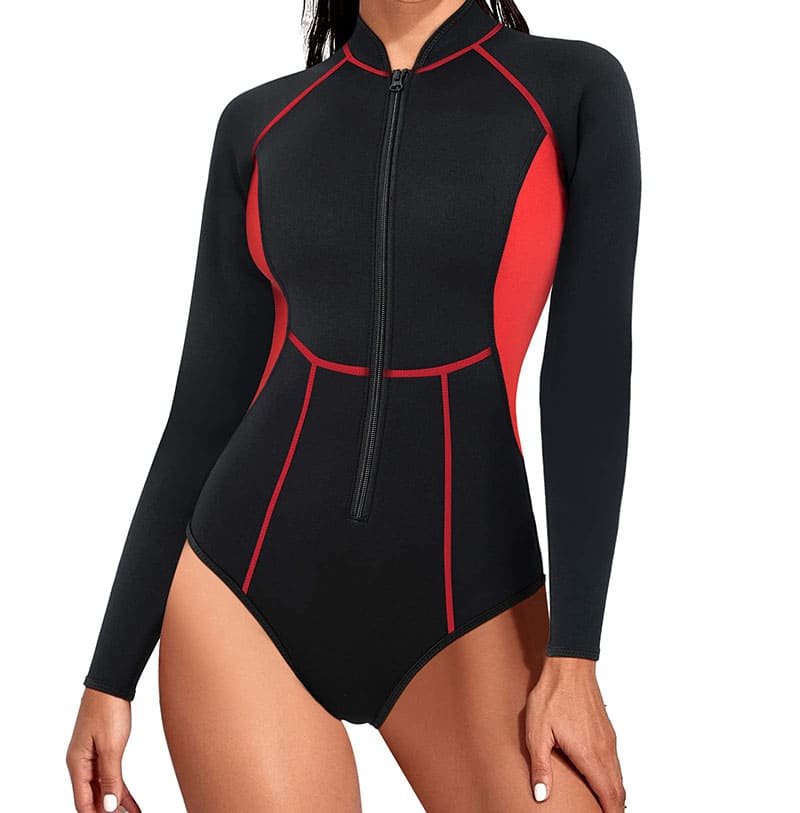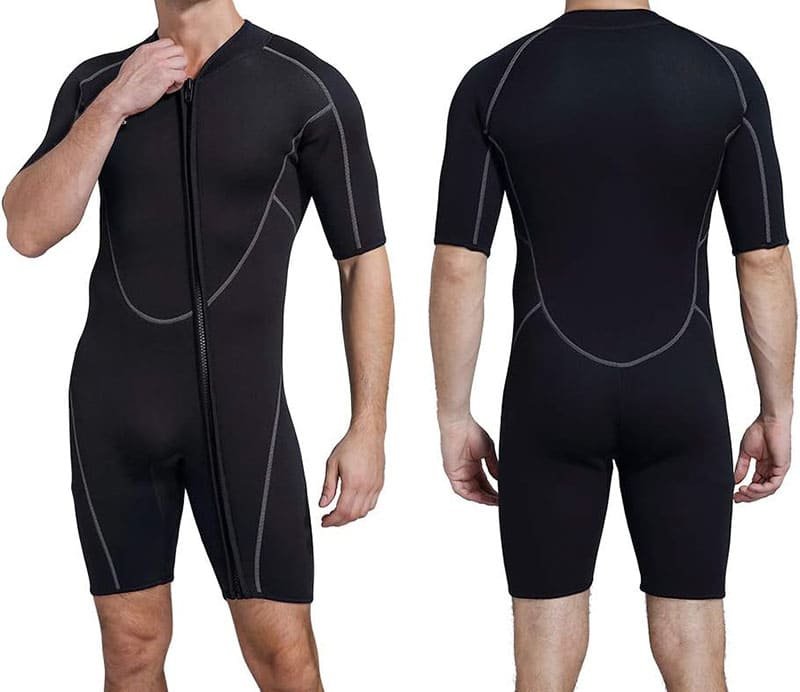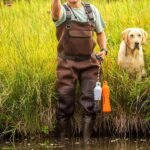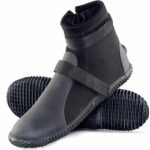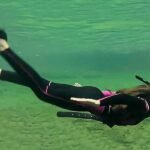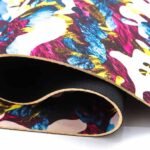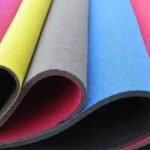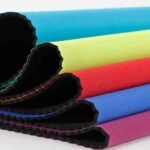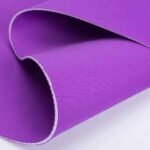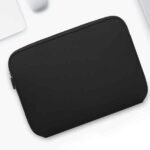Choosing the right wetsuit can mean the difference between an epic surf session and a shivery struggle. You’ve scouted the swell, checked the tides, and now you need gear that keeps you warm, flexible, and comfortable—from first light to golden hour.
To pick a wetsuit for surfing, start by matching suit thickness (2 mm–5 mm) to water temperature: 3 mm suits excel in 58–65 °F (14–18 °C), while 4/3 mm suits cover 52–58 °F (11–14 °C). Ensure a snug, flexible fit by measuring chest, waist, height, and weight, then consult brand size charts for your ideal neoprene match.
Imagine paddling out in crystal‑clear dawn light, your neoprene second skin flexing seamlessly with each stroke, shielding you from a brisk 60 °F Pacific swell. Let’s dive into precisely how to choose, fit, thickness, and styles, so you surf in warmth and style—every time.
What Is a Surfing Wetsuit and Why Do You Need One?
A surfing wetsuit is a neoprene garment that traps a thin water layer warmed by your body, providing insulation against cold water. Without it, you risk hypothermia, muscle cramps, and a shortened surf session.
- Neoprene Composition: Closed‑cell foam made from polychloroprene—offers buoyancy and thermal insulation.
- Insulation Mechanism: Water barrier layer (“flush water”) vs. “dead water” zone that warms up.
- Suit Types: Fullsuits, spring suits, shorties (covered later).
- Use Cases:
- Cold breaks (50–60 °F): Full suits (4/3 mm, 5/4 mm)
- Mild breaks (60–68 °F): 3/2 mm suits
- Tropical breaks (> 70 °F): Shorties or none
- Trade‑Offs: Thicker neoprene boosts warmth but reduces flexibility and adds buoyancy.
How Do I Choose a Wetsuit for Surfing?
Select based on water temperature, flexibility needs, and fit. Prioritize thickness for warmth, seam construction for leak prevention, and stretch panels in shoulders and arms for paddling. Balance insulation with mobility for optimal surfing performance.
- Define Your Water Temperature Range:
- Cold (< 55 °F): 5/4 mm or 6/5/4 mm fullsuits
- Cool (55–65 °F): 4/3 mm or 3/2 mm
- Warm (65–75 °F): 3/2 mm or shorty
- Tropical (> 75 °F): 2 mm spring suit or none
- Assess Your Flexibility Needs:
- Competition/Performance: Ultra‑flex neoprene (Giga Flex, Stretchskin)
- Casual Surf: Standard CR neoprene
- Consider Entry & Seals:
- Back Zip: Easier on/off, slightly more flush water ingress
- Chest Zip/Zip‑Free: Better seal, more stretch, steeper learning curve
- Evaluate Brand Size Charts:
- Measure chest, waist, height, weight, and sometimes torso length
- Compare across brands—sizes vary by ± 5 lb tolerance
- Budget vs. Durability:
- Entry‑level suits use less stretchy neoprene, taped seams
- Premium suits feature glued, blind‑stitched seams, thermal lining, and smooth‑skin exterior
Which Neoprene Types and Seam Constructions Matter Most?
Neoprene types range from standard CR foam to high‑stretch E‑foam and recycled limestone neoprene. Seam constructions—flatlock, glued & blind‑stitched, and welded—determine warmth and water entry. Choose taped, blind‑stitched seams for cold water and flatlock for warm conditions.
- Neoprene Variants:
- Standard CR Foam: Durable, budget-friendly; moderate stretch.
- E‑Foam (Ultraflex): High‑performance stretch; preferred by pros.
- Limestone/Recycled Neoprene: Eco‑friendly, similar warmth.
- Seam Types:
- Flatlock: Visible stitch; vents water—ideal > 65 °F.
- Glued & Blind‑Stitched (GBS): Sealed glue + blind stitch—minimal water ingress; suited for 50–65 °F.
- Welded/Seamless Welding: Ultrasonic bond; maximum seal; premium models.
- Tape & Seal:
- Seam taping adds another water-resistant layer; essential in < 60 °F suits.
- Panel Layout:
- Strategic panel placement for mobility—kanoko underarms, thorax panels, ankle and wrist seals.
How Do You Choose the Right Wetsuit Thickness for Water Temperature?
Match suit thickness to water temperature: 2 mm for > 75 °F, 3/2 mm for 65–75 °F, 4/3 mm for 55–65 °F, and 5/4 mm+ for < 55 °F. Consider personal cold tolerance and session length for fine tuning.
What Thickness Wetsuit Do I Need for Surfing?
- 2 mm Shorty: > 75 °F (tropical waves)
- 3/2 mm Full: 65–75 °F (warm coastal regions)
- 4/3 mm Full: 55–65 °F (cool California springs)
- 5/4 mm+ Full: < 55 °F (cold-water locales like Oregon)
What Temperature Is a 3mm Wetsuit Good For?
- Optimal at 58–65 °F; thinner 3 mm suits struggle below 60 °F over extended sessions.
- Good compromise for variable climates; add booties and gloves if dipping below range.
| Wetsuit Thickness | Water Temp (°F) | Typical Regions | Notes |
|---|---|---|---|
| 2 mm | > 75 °F | Hawaii, Southeast Asia | Short sessions, quick dry |
| 3/2 mm | 65–75 °F | Southern California, Florida | Versatile, quick on/off |
| 4/3 mm | 55–65 °F | Northern California, UK | Add hood for < 60 °F |
| 5/4 mm | 45–55 °F | Oregon, Pacific Northwest | Requires gloves & booties |
What Fit Considerations Ensure Maximum Comfort and Performance?
A wetsuit should fit like a second skin—snug but not restrictive. Key measurements: chest, waist, height, weight, and torso. Look for minimal bunching at elbows and knees, smooth seals at wrists and ankles, and no gaps under the arms.
How Do You Figure Out Your Wetsuit Size?
- Measure Accurately:
- Chest: Around fullest part.
- Waist: At navel.
- Height & Weight: Standing straight.
- Torso Length: Shoulder to crotch (some brands).
- Size Chart Comparison:
- Brands differ by ~1–2 in on chest and height tolerances.
- Try Before You Buy:
- Get on a yoga mat; squat, stretch arms overhead—no pinching.
- Common Fit Issues:
- Too Tight: Restricts paddle and breathing.
- Too Loose: Flush water cools you off.
- Custom Options:
- Szoneier offers bespoke suits tailored to millimeter‑perfect measurements.
Which Wetsuit Styles (Full, Spring, Shorty) Suit Your Surf Conditions?
Choose a full wetsuit for year‑round surfing in cool to cold waters, a spring suit (2 mm short‑long) for mild climates, and a shorty (2 mm short‑arm/leg) for tropical breaks where minimal insulation is needed.
- Fullsuit: Maximum coverage; essential for < 70 °F.
- Spring Suit: 2 mm arms and torso, 3 mm legs—quick drying, flexible.
- Shorty: 2 mm short limbs—optimal > 75 °F; pairs well with boardshorts.
- Hybrid Designs:
- Farmer John/Jean: Bib front for core warmth.
- Back‑Zip vs. Chest‑Zip vs. Zip‑Free: Discussed earlier.
How Do You Care for and Maintain Your Wetsuit?
Rinse your suit in fresh water after every session, hang it inside‑out to dry away from direct sun, and store flat or on a wide hanger. Use neoprene shampoo monthly to remove oils and keep the foam pliable.
- Rinse & Dry Routine:
- Freshwater Rinse: Remove salt and sand.
- Drip Dry in Shade: Inside‑out first day, then right‑side.
- Deep Clean: Neoprene shampoo or mild detergent, soak 10 min.
- Storage:
- Flat or on wide, padded hanger—avoid creases.
- Cool, dry place; no heat or UV.
- Repair Tips:
- Neoprene cement for small tears.
- Seam tape re‑reinforcement for GBS seams.
Conclusion & Call to Action
Picking the perfect surf wetsuit blends science and personal preference—matching thickness to water temperature, fit to your body, and style to your break. From high‑stretch neoprene panels to eco‑friendly limestone blends, the right suit keeps you warm, agile, and stoked on every wave.
Ready for a custom neoprene solution?
Partner with Szoneier—the experienced neoprene R&D and manufacturing factory—to get:
- Free design consultation
- Complimentary sample suits
- Precise custom sizing
- Low MOQs & fast turnaround
- Guaranteed quality assurance
Contact Szoneier today to craft your ultimate surf companion!



